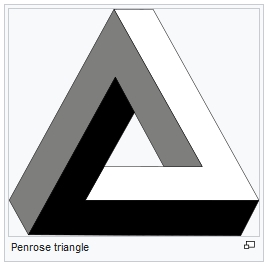Image by Manuel Angel Egea
Only 18 months ago the Australian government gave $14 million dollars to Andrew “Twiggy” Forrest to figure out if his team could build a 500MW electrolyser to make hydrogen gas on an island near Brisbane. It was going to be a glorious Australian green-techno future, the largest hydrogen plant in the world, but it’s missed three deadlines in the last three months to greenlight the project. Instead the Australian company is going overseas.
As Nick Cater points out this part of the made-in-Australia renewable superpower is going to be made-in-Arizona because they still have cheap electricity — a miraculous 7.5c a kilowatt hour!
Australia’s manufacturing decline is a story of broken promises and failed industry welfare programs
Bowen described the project’s success as “critical” to Australia’s ambition to be a green energy superpower.
It turns out abundant sun was not such a competitive advantage in the manufacture of green hydrogen. Low taxes, fiscally responsible government and cheap and reliable carbon-free energy are far more appealing drawcards for investors.
The future is already being built in Buckeye, Arizona, where Fortescue is investing $US500m ($765m) in a green hydrogen plant it says will be up and running by 2026.
In 2023, manufacturing in Arizona grew faster than in any other state. It includes energy and water-intensive industries such as silicon chip manufacturing, with Arizona coming from nowhere to fourth place among US states.
..It isn’t hard to work out why. Arizona’s top state income tax rate is 2.98 per cent. … For energy-hungry industries such as hydrogen and the IT sector, however, the biggest attraction is the industrial electricity price: 7.47 cents a kWh in Arizona compared to 18 cents in California.
Our electricity prices are twice as high as any hydrogen industry could bear
We are so far out of the running. Last month the boss of Fortescue Energy said he was hoping our prices would fall (by half!), and cites Norway as an example of “cheap renewable energy” as if we could emulate that. It’s a bit rich given that the only renewable energy Norway uses is hydropower (96%). Norway has 31GW of hydropower while we have 4GW and can’t even tack on a 2GW pumped hydro dessert. To put it bluntly, Norway has a thousand fjords and a half million lakes and Australia has no fjords and about fifty salt lakes.
Fortescue says hydrogen hopes rest on a halving of power prices
By Peter Kerr, Australian Financial Review, March 11 2024
Mr Hutchinson [Fortescue Energy boss] told The Australian Financial Review Business Summit that high power prices were the main impediment at Gibson Island. “We’ve been working very, very hard on it,” he said. “But it’s tough based on the current power prices when we’re looking at competing globally. It’s a tough decision.
The company expects to approve a green hydrogen project in Norway this year which would be powered by carbon-free hydroelectricity. “If you look around the world where you can get cheap renewable power, competitive renewable power is below $US30 a megawatt hour,” he said.
 The irony is that to make hydrogen he needs the cheap power we used to have on the Australian national grid before we started adding renewables (after 2008 when Kevin Rudd was elected). For twenty years the whole Australian grid price was about $30 a megawatt hour. At a point after 2012, when the carbon tax was added, electricity prices rose up beyond the $50 per megawatt hour price limit that makes hydrogen industry unrealistic, and never came back down.
The irony is that to make hydrogen he needs the cheap power we used to have on the Australian national grid before we started adding renewables (after 2008 when Kevin Rudd was elected). For twenty years the whole Australian grid price was about $30 a megawatt hour. At a point after 2012, when the carbon tax was added, electricity prices rose up beyond the $50 per megawatt hour price limit that makes hydrogen industry unrealistic, and never came back down.
Once upon a time, Australia had electricity so cheap no one would have bought hydrogen. Now electricity is so expensive, hydrogen might be competitive, except no one can afford to make it.
Like the Penrose impossible triangle, just keep going left and it never makes sense.
REFERENCE
AER quarterly wholesale electricity prices 1999- 2023

